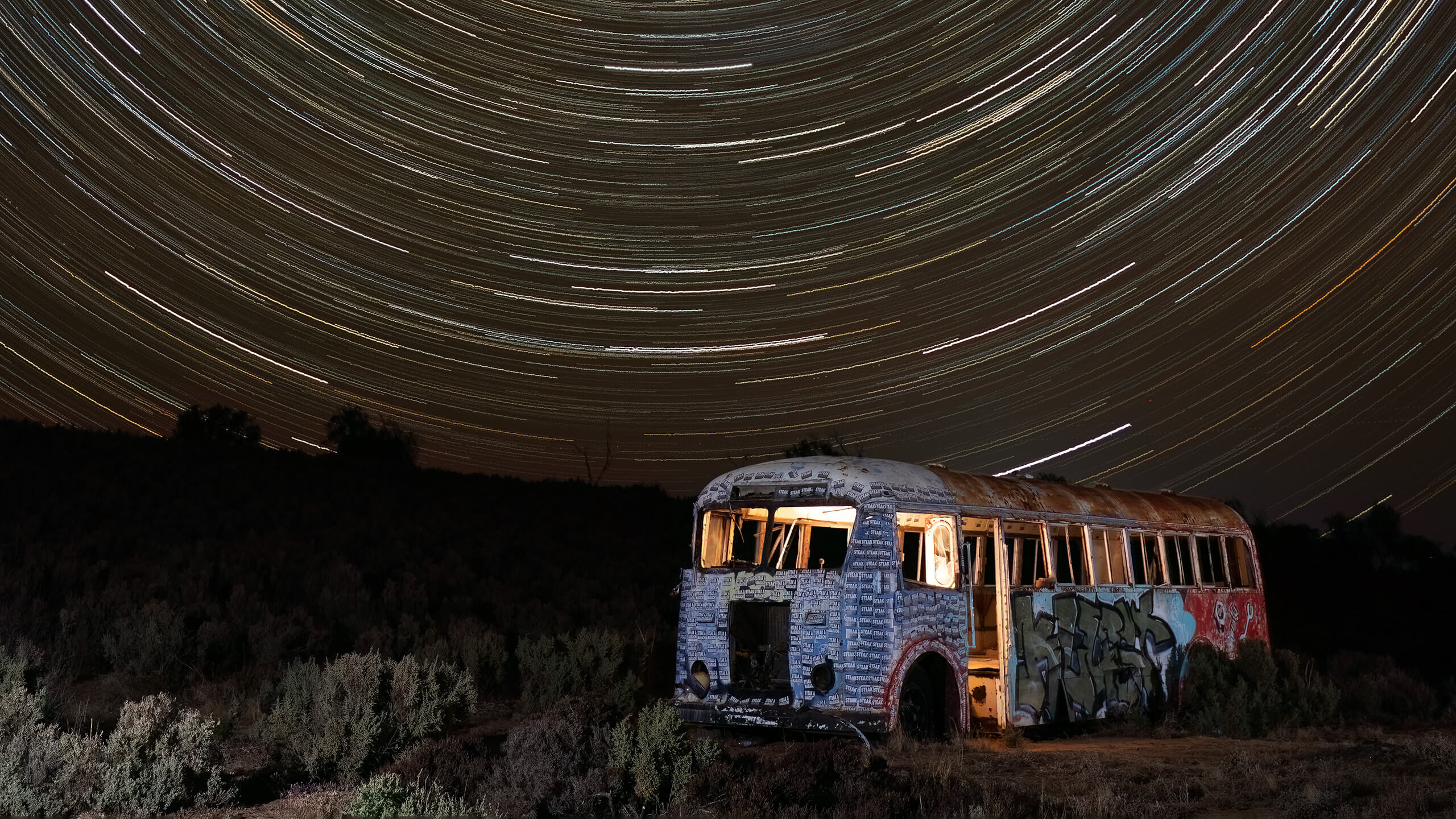I always thought star trails took hours of time, loads of technical gear, a great deal of knowledge on the night sky and astro telemetry to get a really cool result. So I never tried, until now. I recently captured my very first star trail photo and it also had a light-painted old bus in there too. Here’s what I did.
How it all happened
I recently had the opportunity to go on a three-day photography workshop with Levin Barret from Rare View Photography to the wonderful Lake Tyrrell in Australia. I have been there several times before, but have never had the opportunity to capture the Milky Way due to weather and such. On this trip, Levin planned everything out and the weather was perfect. Maybe not brilliant for sunrise and sunset, but clear skies for Astro.
There were nearly 20 of us in this group. I also got to play with a Sony A1, a 14mm f/1.4 lens and the Sony A7RV and 16-35mm f/2.8 FE GM lens, thanks to Sony for sponsoring the event. On our first night out we captured straight Milky Way images. The second night was star trails.
Settings
In regards to star trails, we had an intensive morning session learning all about capturing them. Then, we had a hands-on lesson at night. We learned that 20 x 3-minute exposures or in my case 120 x 30-second exposures was enough to get a great star trail.
We also composed our image with an abandoned old bus in the foreground, which was illuminated with soft LED lights to add interest to our photo.
I reverted to my old Sony A7RIII and my 28-75mm Tamron lens for the night, as I was super comfortable working in the dark with this gear. I used my 28mm focal length (in portrait mode) to capture the bus and the Milky Way. ISO1250, f/2.8 and 30-second shots. The bus was 28mm (do not move the camera at all) f/5.0, ISO160 and 10 seconds.
Getting the images
Essentially, we stood (or sat) in the dark for a few hours, firstly to capture our star trail and then to ‘light paint’ the old bus. We lined up with South Pole (which is actually invisible in Australia, unlike in the USA) so that was a little tricky, but basically made an intersection between the Southern Cross and the two brightest spots, just below.
I am sure you can find relevant videos and post on HOW to find the correct pole for where you live. You can buy star trackers and expensive equipment to find all this. Our approach was close enough is good enough … and it was for many of us. Thankfully, Levin was on hand to help.
Once you have your pole and something of interest in your foreground (rocks, trees, old bus), set your composition and find your focus. Also tricky. I learned about Bright Monitoring, I had never heard about this function on my Sony gear before. BIG win on this weekend trip. This allowed me to find a bright star and focus on it in Manual focus, with Peak Assist turned on. Total game changer for me.
Camera gear
For my actual star trail, I used my Sony A7RIII, my Tamron 28-75mm lens, my Tripod and I should have used my velometer … I couldn’t find it! So … what I did was set my camera to a 30-second shutter and pressed the shutter button 120 times over an hour! Not the easiest thing to do in the world. I was so cold and numb (was not dressed as well as I could have been with thermals), but I did have my hat and jacket. It gets cold in the outback in May. So lesson learned, be prepared.
Tips and tricks
- Make sure you have all your gear ready and at hand (and working)
- Make sure your battery is full and carry a spare (someone’s battery died 3/4 way through shooting — not me)
- Make sure your SD card has plenty of room, or use an empty one
- Make sure you are warmly dressed, thermals, jacket and hats, gloves etc
- Pick a great spot with some interest in the foreground, it could be a tree or a rock
- Learn how to find the pole in your region
- Learn how to use a velometer so you don’t have to take every photo yourself!
- One hour is more than enough to capture a great star trail, but if you want more, you can stay longer … bring snacks!
- Capture your star trail first and then capture your foreground. Using light painting techniques with LED lights is a great way to do this. Once you have both you can blend them in Photoshop. Especially if you have clear skies, clouds may move in if you capture your light painting image first.
- Learn to use Night sky apps like Photopills or the Photographers Ephemeris to find your best location to set up
- Use a good torch or headlamp to safely find your way in the dark — just don’t use it while capturing your images
Post-processing
This was the super easy part, once home I loaded everything into Lightroom, selected my images and opened in Photoshop as a layered image and yes it’s BIG. Set everything to Lighten Mode — brilliant. Add in your foreground image, also on Lighten mode, mask out the night sky (if required) and it’s basically done for you. If you want to conserve space, flatten the image to a much smaller tiff or jpeg. Finishing editing in Lightroom (or stay in Photoshop). If you have noise, either try Denoise in the new Lightroom or use Topaz Denoise.
And there it is my first ever star trail … big thank you to Levin Barrett for an amazing weekend and so many valuable insights into shooting the night sky.







Leave a Reply